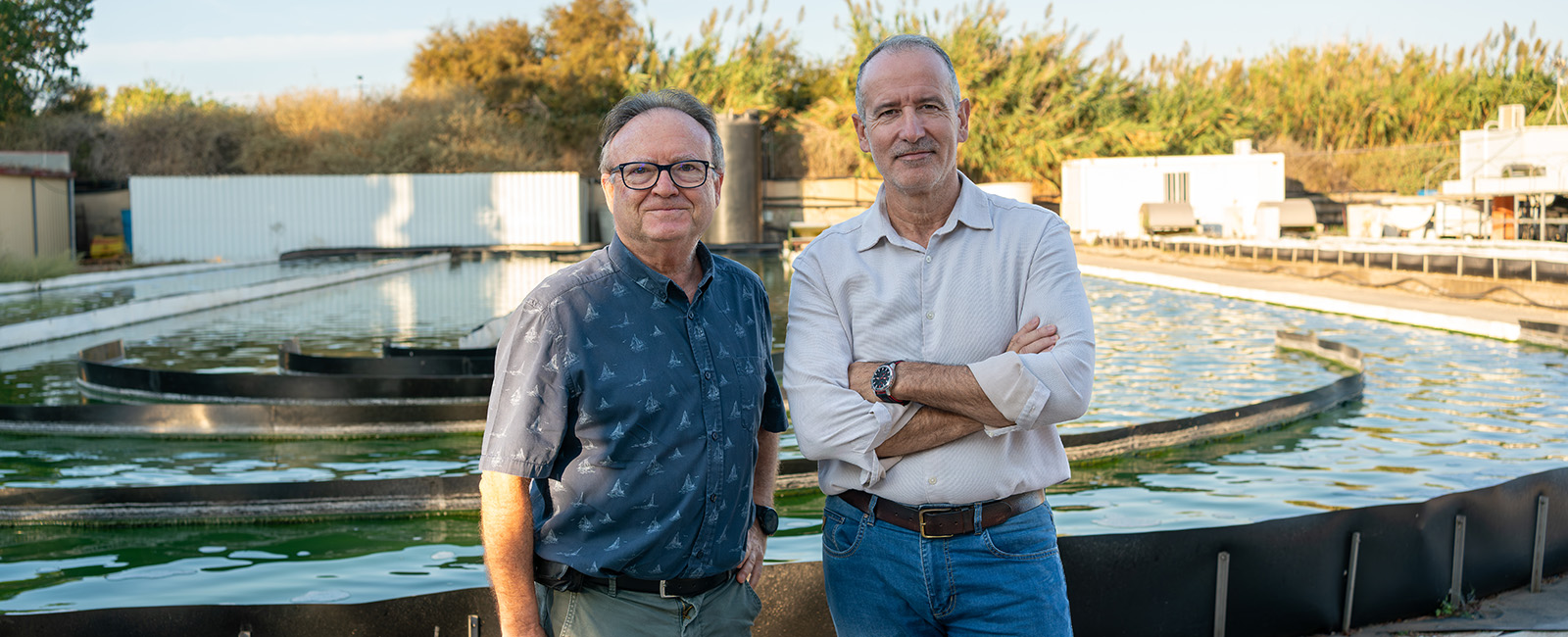RESEARCH TEAM
Principal investigators: Francisco Gabriel Acién Fernández (Universidad de Almería) and Miguel Urrestarazu Gavilán (Universidad de Almería).
Team members: Fernando Marcelo Chiamolera Gallon (Universidad de Almería); Cintia Gómez Serrano (Universidad de Almería); José Luis Guzmán Sánchez (Universidad de Almería); Ainoa Morillas España (Universidad de Almería) and Tatiana Pagan Loeiro da Cunha (Universidad de Almería).
DESCRIPTION
Two research groups from the Universidad de Almería – one with more of a chemist profile, under Francisco Gabriel Acién Fernández, and another specialized in agricultural engineering, led by Miguel Urrestarazu Gavilán – have joined forces in an innovative water regeneration proposal that addresses the problem of water scarcity in Mediterranean regions. For the last two years they have been looking at biological solutions involving microalgae, as an alternative to conventional purification techniques, to treat urban wastewater and transform it into water suitable for agricultural use. Acién sums up ALBOR thus: “We want to push these technologies into the mainstream. This natural solution would cut costs while matching the safety and cleanliness standards of water treated in conventional purification plants.”
Both researchers talk about the horticultural roots of Almería, where they work. The province is considered the “orchard of Europe,” so water supply is fundamental. Urrestarazu believes proper technical management of these treated waters could even benefit certain crops: “We have evidence that nutraceutical quality is improving across all eight major vegetables crops grown in Almeria (tomato, bell pepper, eggplant, zucchini, green beans, melon and watermelon), that is, they can provide additional health benefits by being richer in anticarcinogens, vitamins, and antioxidants.”
The project includes a knowledge transfer and dissemination strategy aimed at farmers, public authorities and other key players in the region. “We want these technologies to be easy to implement, so farmers themselves can operate them without the need for engineers,” says Acién. To do this, they are employing cutting-edge tools like digital microscopy, flow cytometry, NIR spectroscopy, HPLC-MS, ICP-MS and omics analysis, which will allow them to measure crop parameters and make the systems self-sufficient. As a result, small and medium-sized towns of 10,000 to 50,000 inhabitants, where it would be costly to install a conventional wastewater treatment plant, should be able to transform thousands of cubic meters of wastewater daily into the same amount of clean water that local farmers can use for irrigation.

